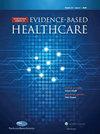接受透明质酸填充的女性鼻唇沟区域热成像分析的研究方案
Q3 Medicine
International Journal of Evidence-Based Healthcare
Pub Date : 2022-04-20
DOI:10.17267/2675-021xevidence.2022.e3754
引用次数: 0
摘要
导语:由于透明质酸(HA)等面部填充物的作用引起的即时和晚期并发症的病例越来越多,迫切需要更好地评估这些美容和功能手术的效果。从这个意义上说,使用红外热像仪(IRT)作为局部功能障碍诊断的辅助工具是相关的。这种诊断方法允许进行注射的专业人员确定所治疗解剖部位的微循环状况,从而在出现不良反应(如微泡的形成、血管受压等)时能够进行早期干预。目的:利用TRI描述HA填充患者鼻唇沟(NLF)区域的热系数。方法和材料:这是一项前瞻性研究,涉及来自一家私人诊所的25名女性患者。在NLF区域填充AH之前、之后、1小时、3小时和1个月分别进行热成像。中国工程院批准研究:34546620.7.0000.5544。结果:本研究的结果将允许预防性随访和早期干预与AH面部填充物相关的血管改变病例。本文章由计算机程序翻译,如有差异,请以英文原文为准。
Study protocol for thermographic analysis of the nasolabial fold region in women submitted to hyaluronic acid filling
INTRODUCTION: Due to the increasing number of cases with immediate and late complications caused by the action of facial fillers such as hyaluronic acid (HA), there is an urgent need to better evaluate the effect of these aesthetic and functional procedures. In this sense, it is relevant to use Infrared Thermography (IRT) as an auxiliary tool for the diagnosis of local dysfunctions. This diagnostic method allows the professional who applies the injections to be certain about the condition of the microcirculation of the anatomical site being treated, enabling the possibility of early intervention in case of adverse effects, such as the development of microbubbles, vascular compression, among other conditions. OBJECTIVE: The aim is to describe the thermal coefficient of the nasolabial sulcus (NLF) region of patients undergoing HA filling, using TRI. METHODS AND MATERIALS: This is a prospective study involving 25 female patients from a private clinic. Thermal imaging will be performed before, immediately after, 1 hour, 3 hours, and 1 month after filling the NLF region with AH. Study approved by CAAE: 34546620.7.0000.5544. RESULTS: The result of this study will allow preventive follow-up and early intervention in cases of vascular alterations related to facial fillings with AH.
求助全文
通过发布文献求助,成功后即可免费获取论文全文。
去求助
来源期刊

International Journal of Evidence-Based Healthcare
Medicine-Health Policy
CiteScore
1.80
自引率
0.00%
发文量
39
期刊介绍:
The International Journal of Evidence-Based Healthcare is the official journal of the Joanna Briggs Institute. It is a fully refereed journal that publishes manuscripts relating to evidence-based medicine and evidence-based practice. It publishes papers containing reliable evidence to assist health professionals in their evaluation and decision-making, and to inform health professionals, students and researchers of outcomes, debates and developments in evidence-based medicine and healthcare.
The journal provides a unique home for publication of systematic reviews (quantitative, qualitative, mixed methods, economic, scoping and prevalence) and implementation projects including the synthesis, transfer and utilisation of evidence in clinical practice. Original scholarly work relating to the synthesis (translation science), transfer (distribution) and utilization (implementation science and evaluation) of evidence to inform multidisciplinary healthcare practice is considered for publication. The journal also publishes original scholarly commentary pieces relating to the generation and synthesis of evidence for practice and quality improvement, the use and evaluation of evidence in practice, and the process of conducting systematic reviews (methodology) which covers quantitative, qualitative, mixed methods, economic, scoping and prevalence methods. In addition, the journal’s content includes implementation projects including the transfer and utilisation of evidence in clinical practice as well as providing a forum for the debate of issues surrounding evidence-based healthcare.
 求助内容:
求助内容: 应助结果提醒方式:
应助结果提醒方式:


